
Click here to go to printable recipe: Epiphany Bread
According to the Merriam-Webster dictionary, an epiphany is “a moment in which one suddenly sees or understands something in a new or very clear way”; for Christians around the world, the Feast of the Epiphany is observed on January 6th, commemorating the revelation of Jesus to the Wise Men from the East, also known as the Magi, or “Los Reyes Magos” in Spanish. Although the first mention of this event comes from only one of the gospels of the Bible, where the number and nation of origin of the Magi are not specified, it is mentioned that they brought three gifts: gold, frankincense, and myrrh; this is probably why traditionally they are pictured as a group of three wise men. In addition, the concept of these men being kings comes from other biblical references of “kings falling down” before Jesus, and in the context of the Wise Men, it has more to do with their high level of education and wisdom, and not as a literal position of power. Documents recovered from as early as 500 AD, and later medieval accounts, adopted the story of three wise men, giving them names and more specific origins: Melchior (Melchor, from Europe), Caspar (Gaspar, from Asia), and Balthasar (Baltazar, from Africa).
In France and other European countries, the tradition of preparing a special sweet treat for this season may be traced probably to the times of the Roman Empire, first as a tribute to Saturn to celebrate the lengthening of daytime hours, and later re-interpreted as a celebration of the Epiphany of the Magi. The first cakes were sweetened with honey and adorned with figs and dates; a dry broad bean was hidden inside, and the person to find it in their portion would become the king of the celebration. In the Middle Ages, French cakes remained similar in texture and tradition, called King cakes, but in the context of their Christian religion, forming the cake into a ring to represent God’s eternal love, the fruit on top as the distractions of the mundane, and the hidden bean as a symbol of Jesus’ family trying to hide him from persecution, as related in the Bible’s New Testament. Epiphany is still celebrated with La galette de rois, which comes with its own paper crown to be worn by the person who finds the bean (now usually a figurine of a baby). French settlers in Louisiana and other Southern states brought the tradition of the King Cake to the United States in the 1800s. It became so popular that it continued to be enjoyed throughout the days between Epiphany Day and Fat Tuesday (Mardi Gras), the last day of celebrations before Lent; to this day, the cake is still known as King cake, and it is often decorated with green, purple and yellow (gold) coloured sugar, the carnival colours representing faith, justice and power, respectively.
Epiphany day also marks the last of the traditional twelve days of the Christmas season. In England, the cake became known as the Twelfth Night Cake, particularly popular during the Tudor era, and even mentioned in Shakespeare’s “Twelfth Night”; during queen Victoria’s reign, when German traditions such as the Christmas tree were introduced to the kingdom, the practice became less popular and was replaced by a Christmas cake.
Spain adopted the tradition of a King cake for Epiphany, called “roscón de reyes” – “kings’ wreath”, later on adding the use of ceramic figurines of a baby or a wise man placed inside the cake; the person to find the figurine would be declared king of the celebration, but the one to find the dry bean would have to pay for the next King cake. On the night of January 5th, children set up a shoe where the Wise Men are to deposit gifts, just as they offered gifts to Jesus.
In Mexico, the Spanish traditions have been embraced; nowadays, many children still place their shoes and go to bed early on January 5th, hoping for some gifts from “Los reyes”, and people gather together on January 6th at workplaces, schools and homes to partake in the sharing of the rosca de reyes, the Mexican version of the kings’ wreath, also known as Epiphany bread. In typical Mexican fashion, the season of celebration is extended even further, since the person to find the figurine inside their slice of Epiphany bread, will host a party with tamales on February 2nd, marked in the Catholic calendar as Candlemas (día de la Candelaria) and the Presentation of Jesus at the Temple. On this day, many people bring baby Jesus figurines from their Nativity sets to church to be blessed, along with new candles, which represent the new light of Christ; the gathering to eat tamales provided by the pre-determined host takes place later on in the evening.
My recipe for Rosca de Reyes is very traditional, made with dry yeast, extra egg yolks for richness and colour, and orange flavourings. I could not find figurines to hide, and did not have dry broad beans, so I used a couple of whole almonds instead. Decorations of dry fruit and a crumbly paste are also the standard in Mexican roscas; this crumbly topping is my daughters’ favourite part, and they always request a generous amount of these decorations.
Epiphany Bread – Rosca de Reyes
Printable recipe: Epiphany Bread
Ingredients
1 package (8g) instant or traditional dry yeast
½ cup warm milk (approximately 104°F or 40°C)
4 cups flour
¾ cup sugar
½ tsp salt
3 eggs, at room temperature
3 egg yolks, at room temperature
1 large orange; finely grated rind only
2 tbsp orange blossom water
¾ cup unsalted butter, cut into pieces, at room temperature
Decorations:
½ cup unsalted butter
¾ cup flour
½ cup powdered sugar
1 egg; separated
Crystallized or dried fruit (orange rind, figs, cherries)
Granulated sugar
Figurines, dry broad beans or whole almonds (to hide in the bread)
It is very important that all the ingredients are at room temperature, and the milk is warm but not too hot. I had both instant and traditional dry yeast packets (photo below, left). Instant yeast may be sprinkled directly with the rest of the ingredients, but since I always like to pre-mix with lukewarm liquid to give it a head start, I chose to use the traditional dry yeast. Mix warm milk with one tablespoon of flour and one of sugar from the measured ingredients; sprinkle yeast on top (photo below, centre). After a few seconds, it should start bubbling and dissolving, and continue to rise (photo below, right):
Let the yeast mix rise for 10-15 minutes. Meanwhile, place the rest of the flour in a large bowl, opening the centre to form a wall, and add the rest of the sugar, the salt, eggs and egg yolks to the opening (photo below, left); I had orange blossom water (photo below, centre) but if not available, use juice from the orange on the ingredient list, after grating the rind onto the mix; I poured the water on the grater to loosen up the grated rind (photo below, right):
Add cubed butter (photo below, left); incorporate with hands or a spatula (I like to use both, to keep one hand clean to gather other utensils and ingredients, photo below, centre); pour yeast mix in and continue mixing (photo below, right):
Once incorporated loosely, dump mixture onto a clean working surface (photo below, left); knead the mixture by folding edges over to the centre, flipping and trying to pick up the dough. This dough is quite manageable, and this should not take more than a few minutes; after five minutes, the dough comes apart from the working surface, but breaks easily when pulled (photo below, centre); continue kneading, pulling, folding and flipping until the dough becomes elastic, and may be pulled without breaking (photo below, right after ten minutes of kneading):
Knead for another five minutes, pulling, flipping and slapping the dough on the working surface (photos below):
Form a ball, pinching the dough together towards the centre (notice no trace of dough on the working surface, photo below left); place dough in a slightly greased bowl, pinched side down (photo below, right):
Cover with a clean kitchen towel, and let rest in a warm spot for about one hour. In the meantime, prepare two baking sheets by lining with parchment paper. This is a good time to prepare the paste for decorations. Place butter, egg yolk, powdered sugar and about 1/2 cup of flour in a bowl, reserving the egg white and the rest of the flour separately (photo below, left); mix ingredients in the bowl, and gradually add more flour as needed (photo below, centre), to obtain a smooth and very light paste (I used the whole 3/4 cup, photo below, right):
The traditional dried fruits in Mexican Epiphany bread were figs, orange rind and acitrón (a crystallized Mexican cactus), but the cactus is now an endangered species. I used dried figs, cut into strips, squares of crystallized papaya, and halved Maraschino cherries, tinted in red and green; I also used two whole almonds, to hide inside the bread instead of figurines:

After one hour, my dough had doubled its size and was ready to form (photo below, left); divide into two pieces, and work with one at a time. Lightly knead the piece and roll into a rope, approximately two feet in length and a cross section of about one inch (photo below, centre). Place rope on one of the prepared sheets, connect the ends to form a ring, wrapping one end around the other; choose a random spot to hide one almond (or figurine, if available), placing it inside the bread from the bottom (photo below, right), pinch the dough around the almond, and flip back to conceal the spot:
Let the ring rest in a warm spot, until it rises again (photos below show before and after one hour of resting):
To decorate the ring, start with the reserved egg white, half the paste from the small bowl and granulated sugar (photo below, left); coat the ring with egg white using a brush (photo below, centre); slice small pieces of paste and form into strips, placing them on the ring, and sprinkling with granulated sugar (photo below, right):
Arrange dried fruit to finish decorating the ring:

As I mentioned, my daughters really like the paste on top of the ring, so I completely covered the second ring with strips of paste before decorating with fruit. Photos below: second ring before rising (left), after rising, completely covered with paste (centre) and fully decorated, ready for the oven (right):
Preheat oven to 375°F (190°C), then place baking sheets with rings in separate shelves (photo below, left). Let cook for ten minutes, then switch sheets from bottom to top shelves, and rotate each sheet 180 degrees, so the side facing the front now faces the back of the oven; bake for another ten minutes, until rings are fully risen and golden brown (photo below, right):
This is the second ring, after baking:

Transfer rings to cooling racks, for at least fifteen minutes; this is the first ring, cooling on the rack:

The bread was fluffy, light and with a flaky crumb:
The best way for thawing after a cold January day is to enjoy a frothy mug of hot chocolate (click here for my recipe), the traditional pairing for this delicious bread:
Are you setting up a shoe for the Reyes Magos to find?
I am sharing my recipe at What’s for Dinner? Sunday Link-Up # 296 with Helen @ The Lazy Gastronome.

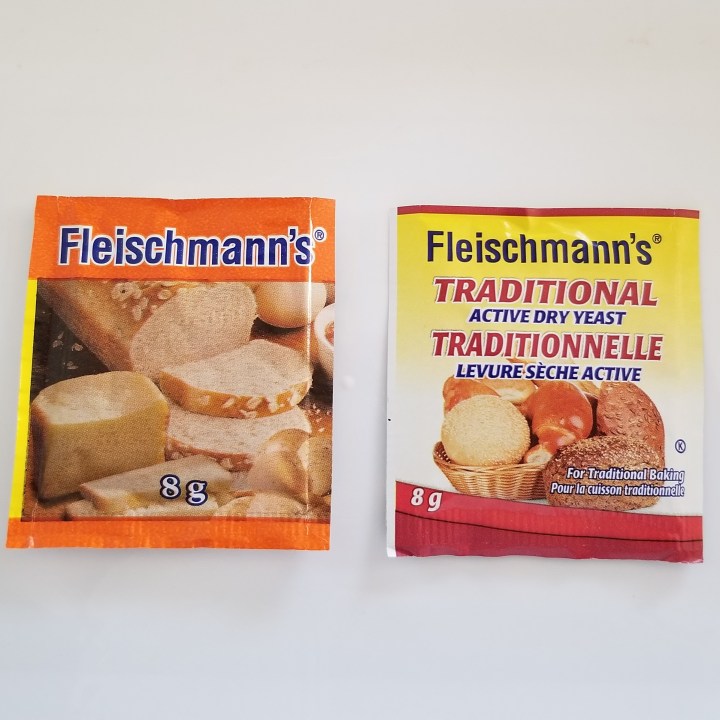
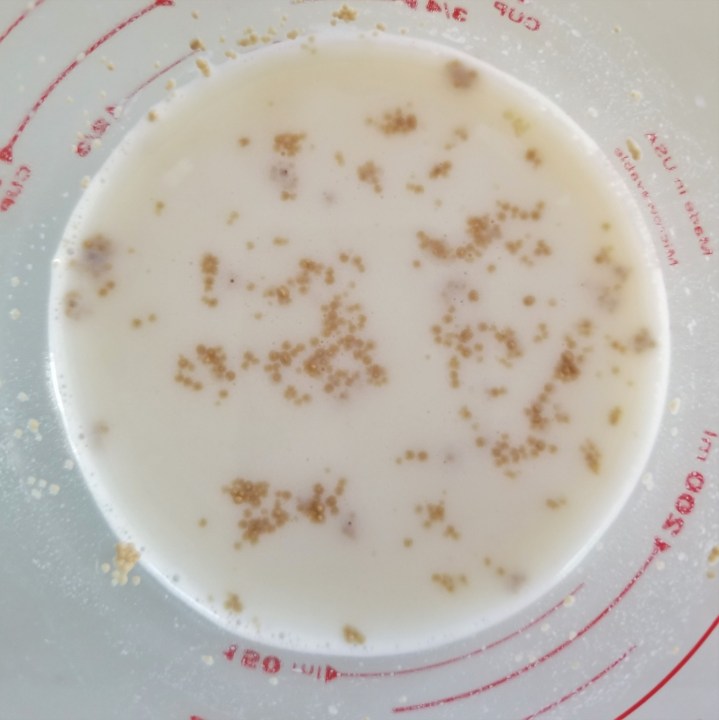
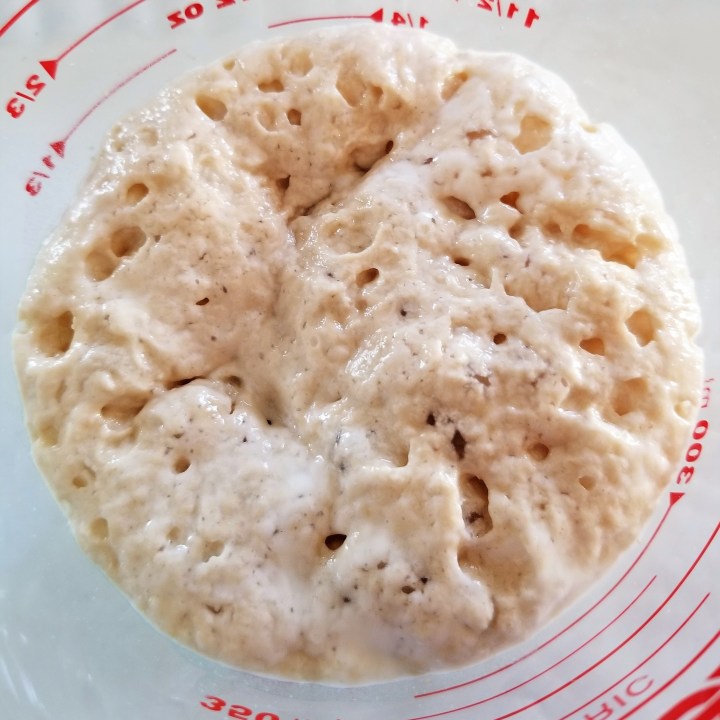
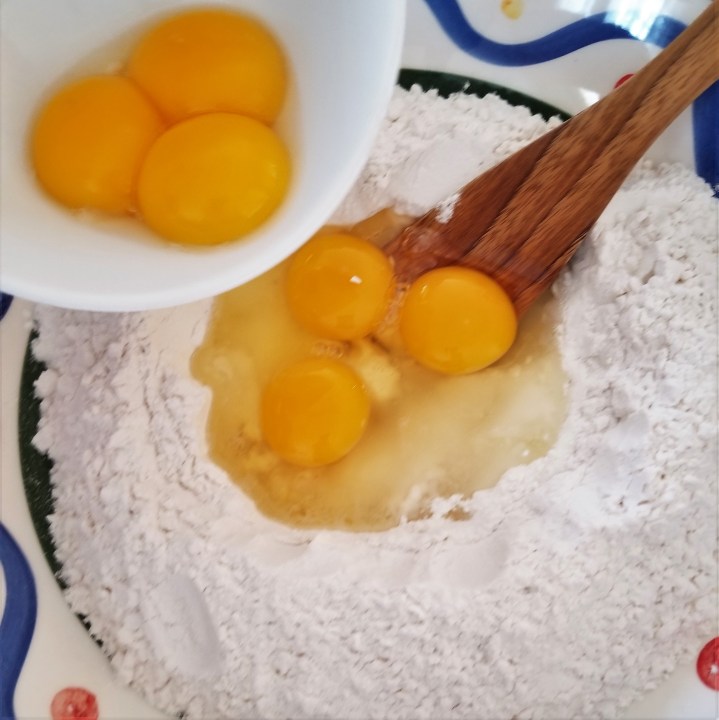


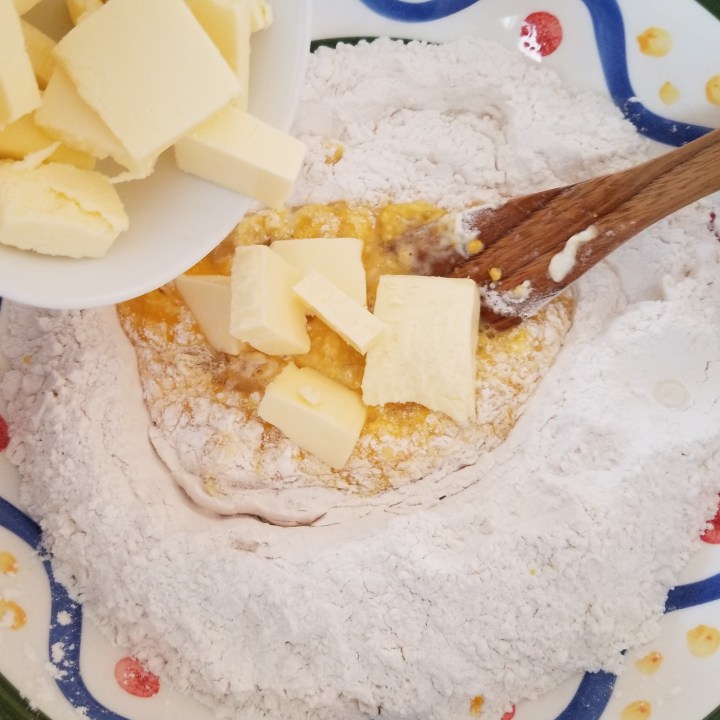
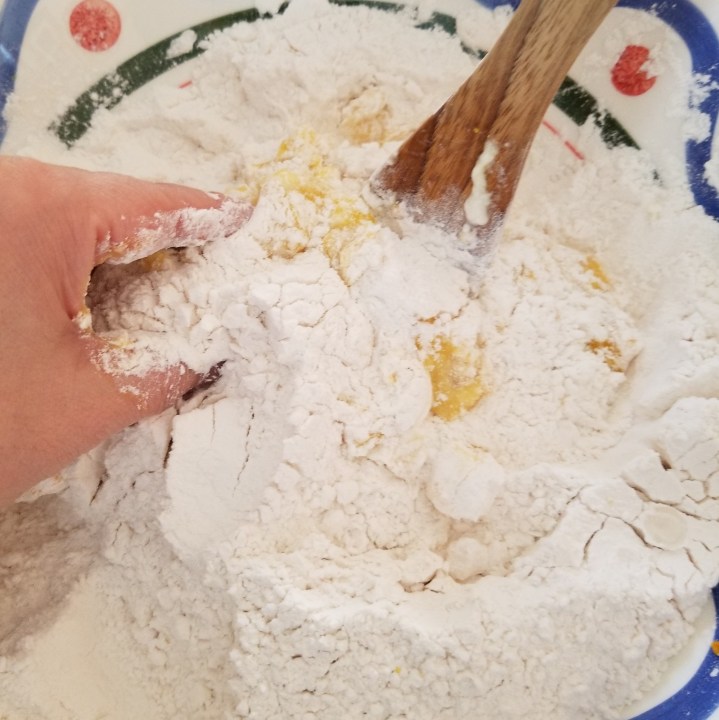
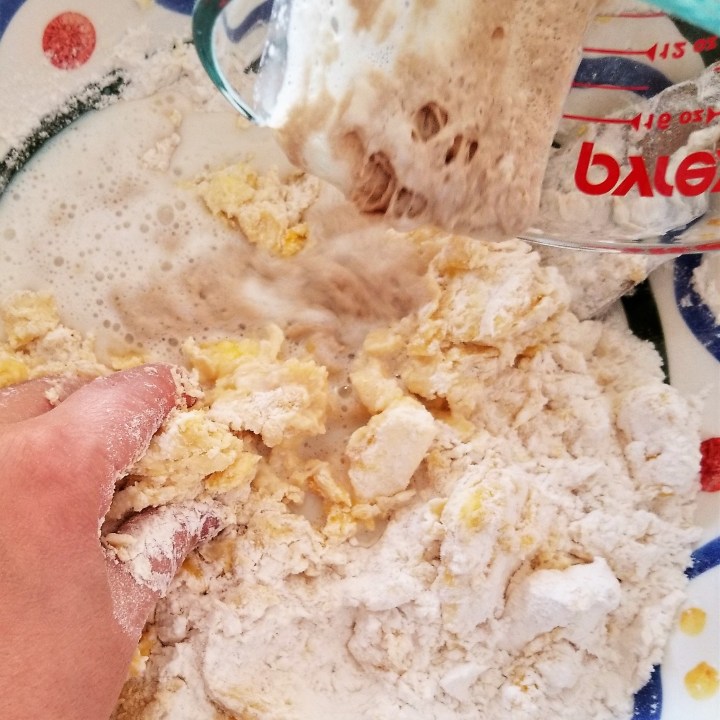
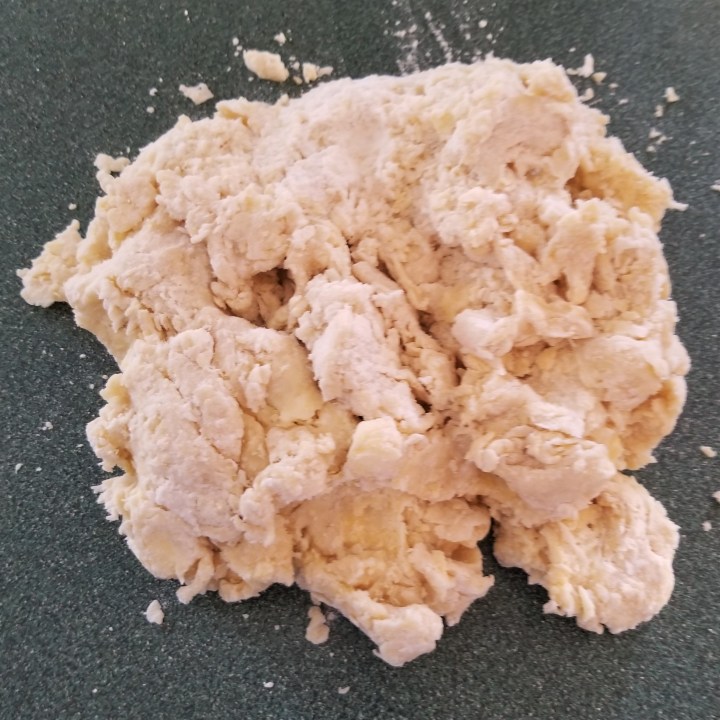
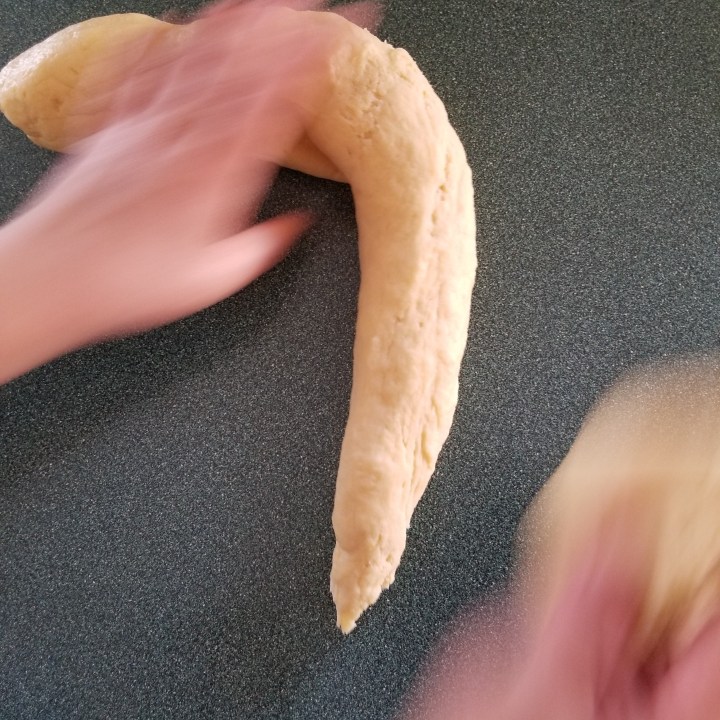

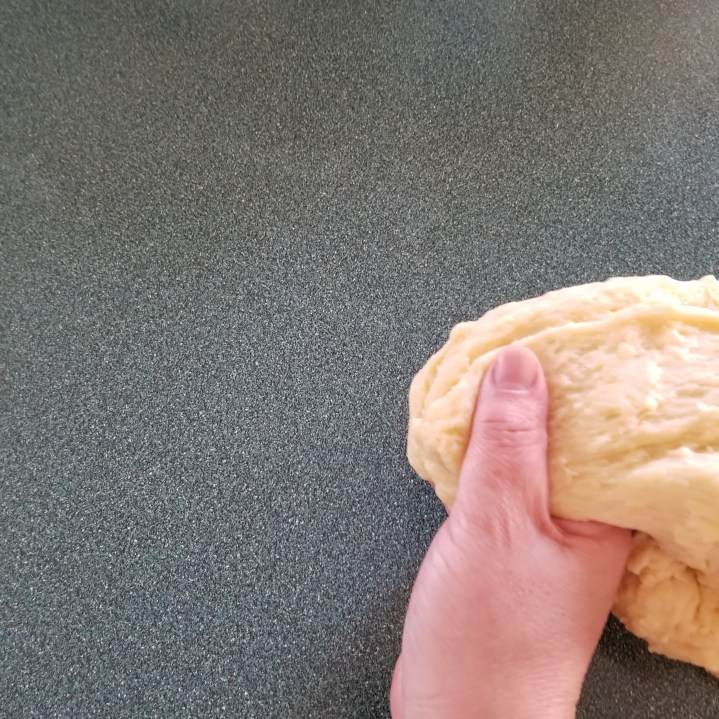
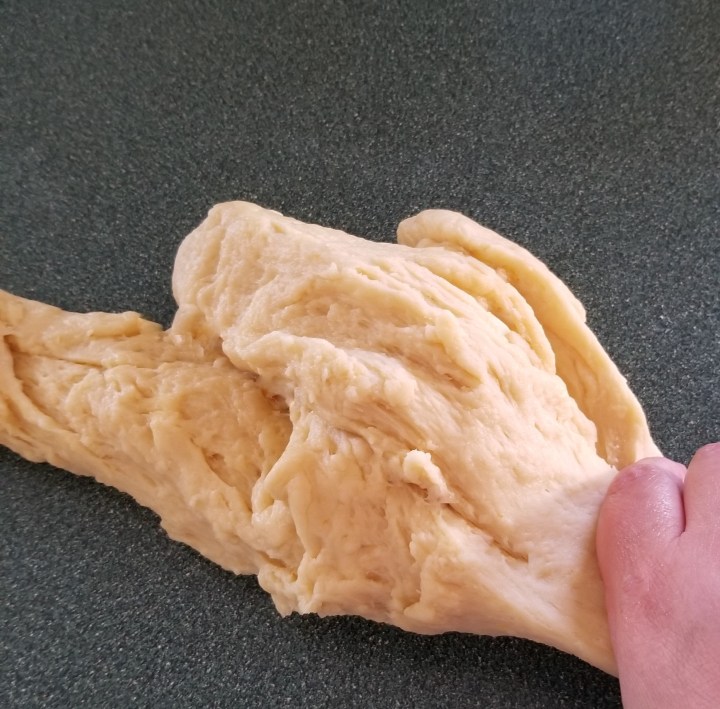
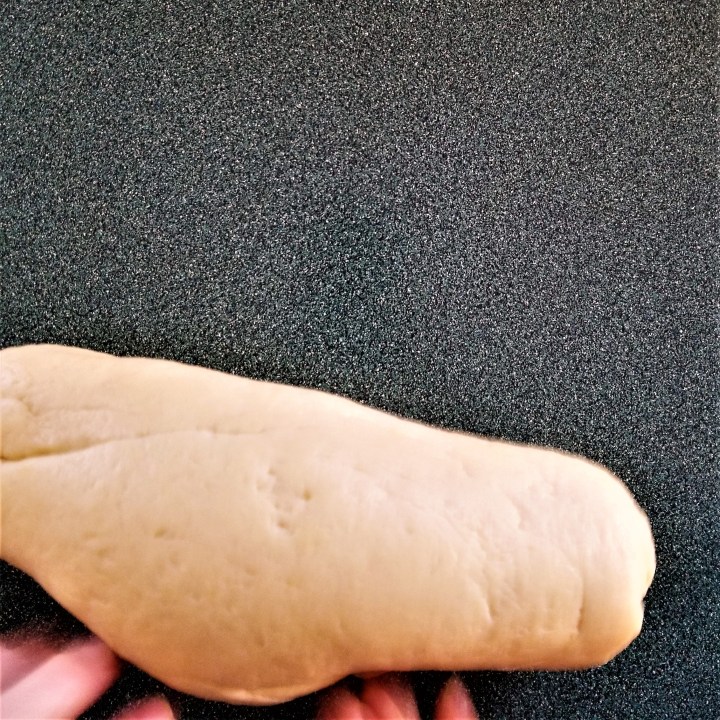
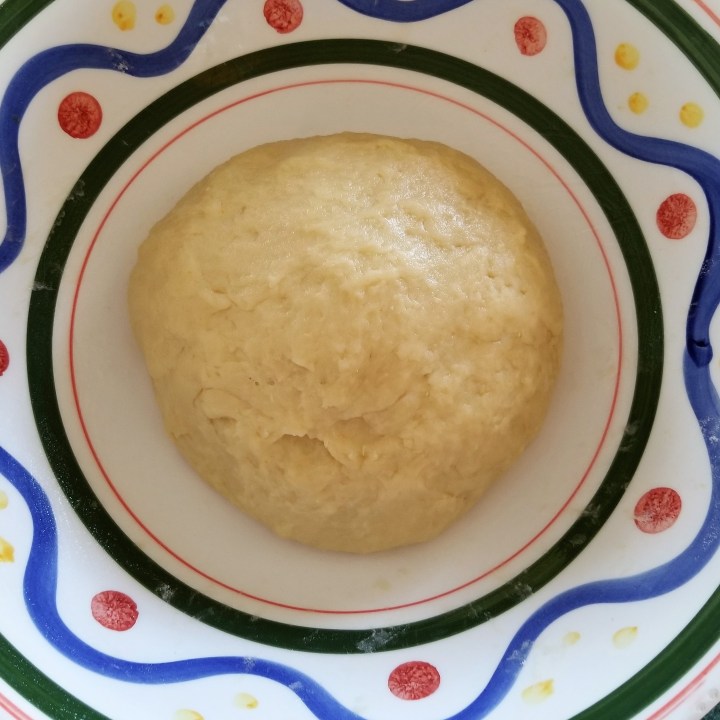
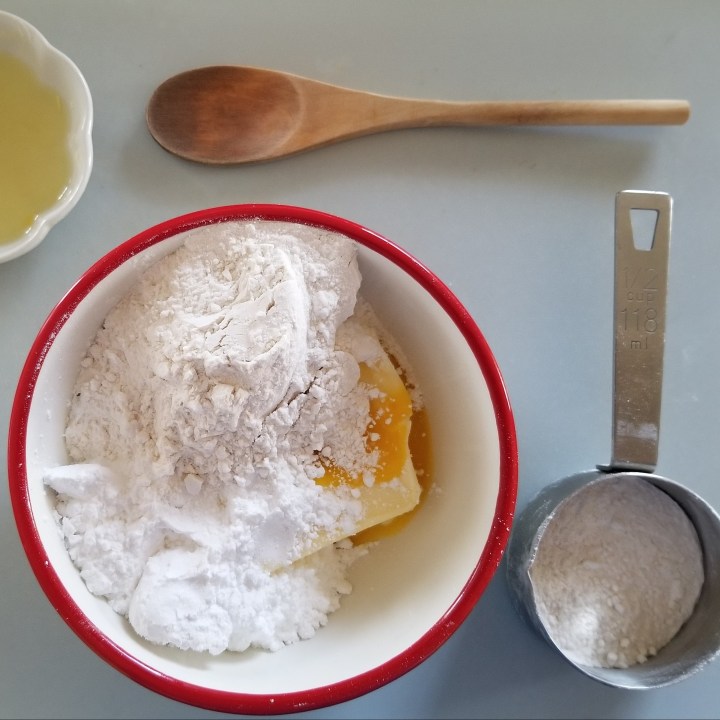
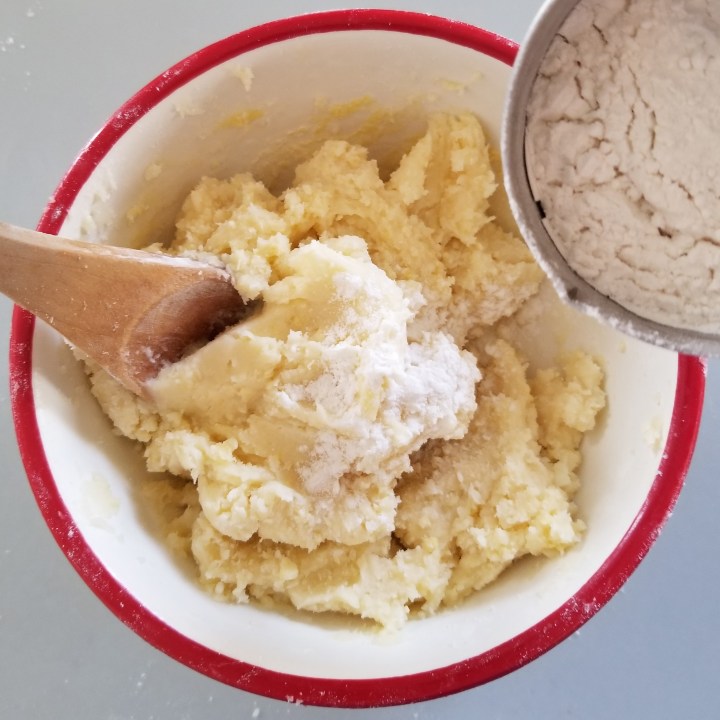
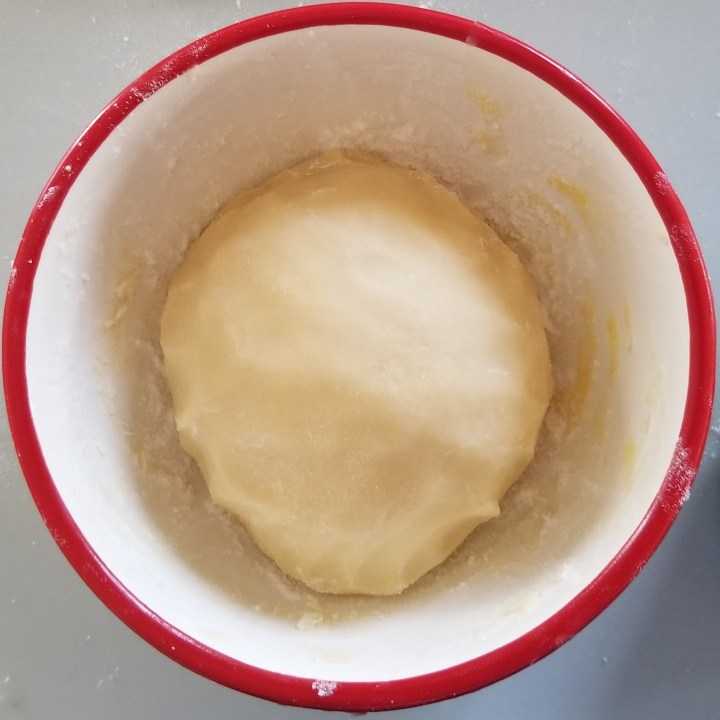
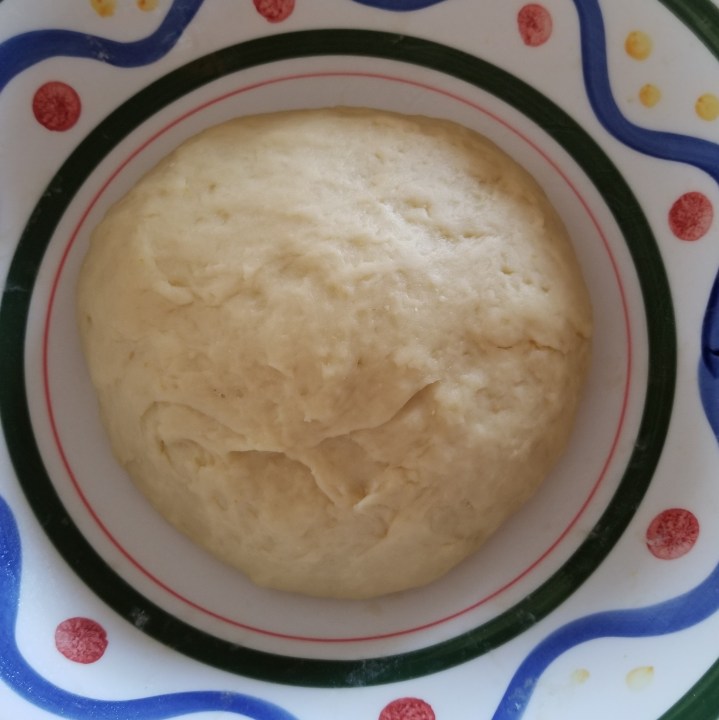
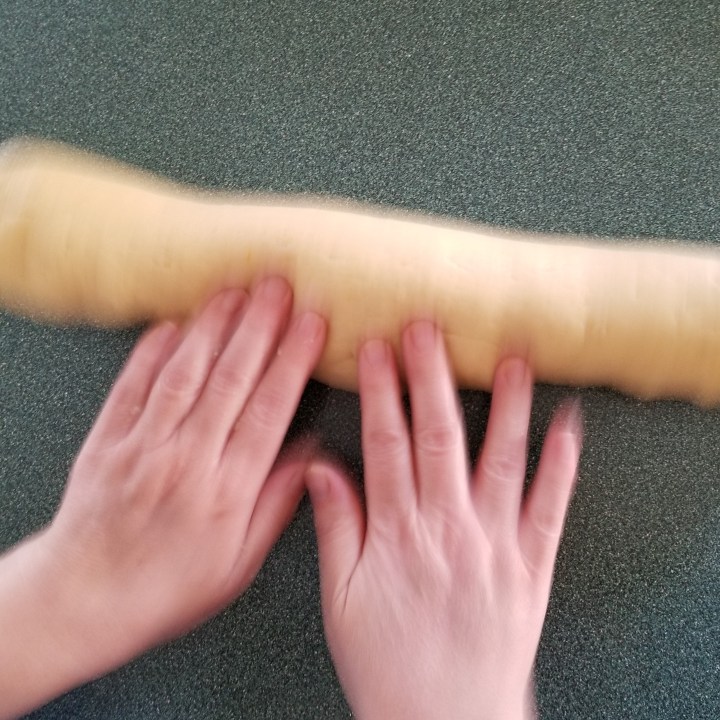
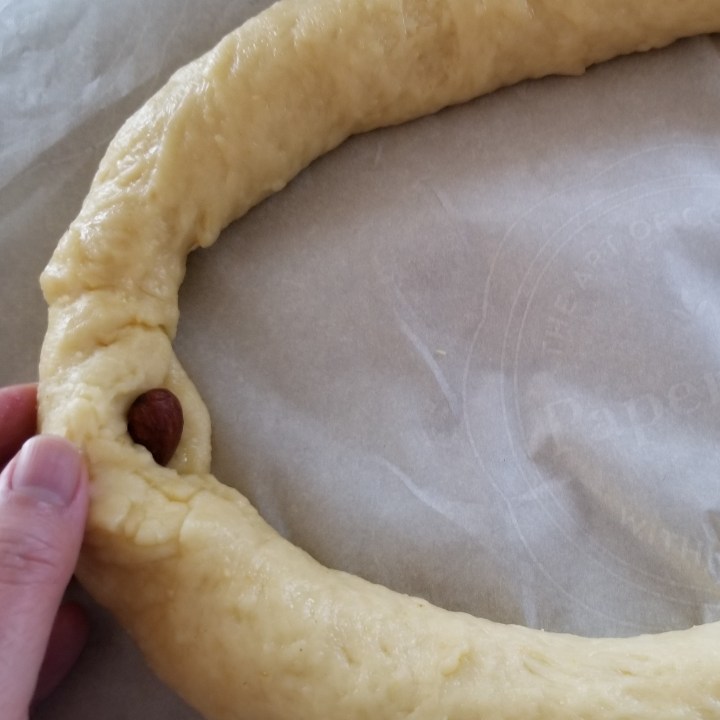
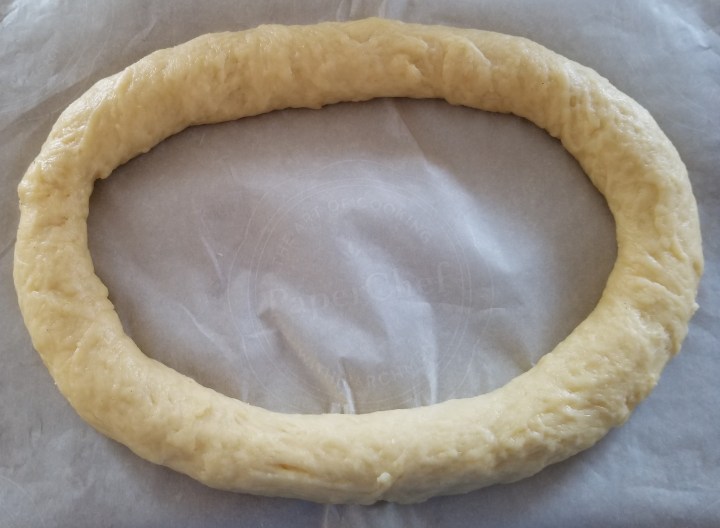
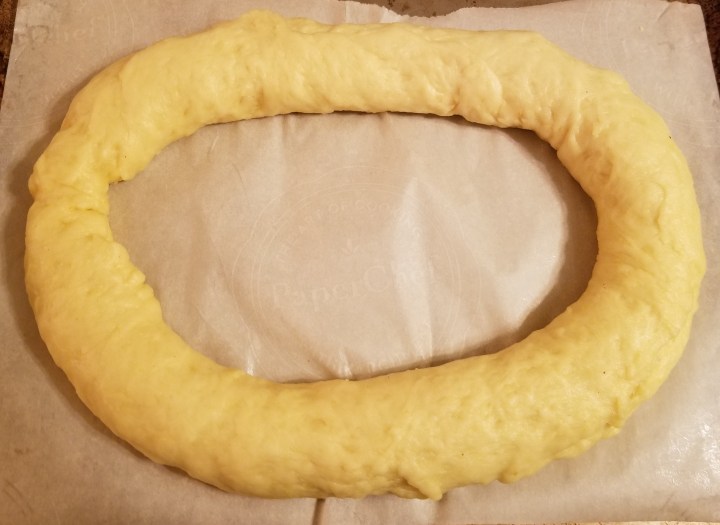
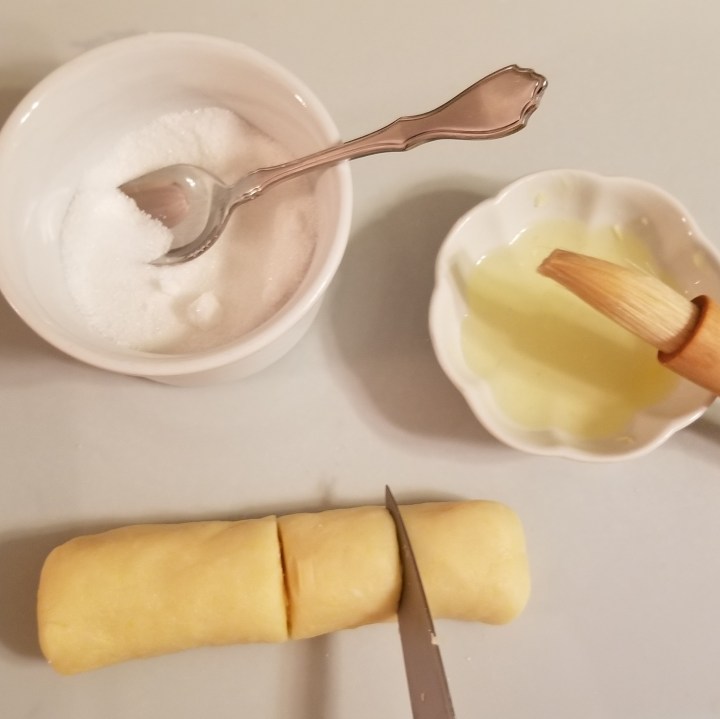
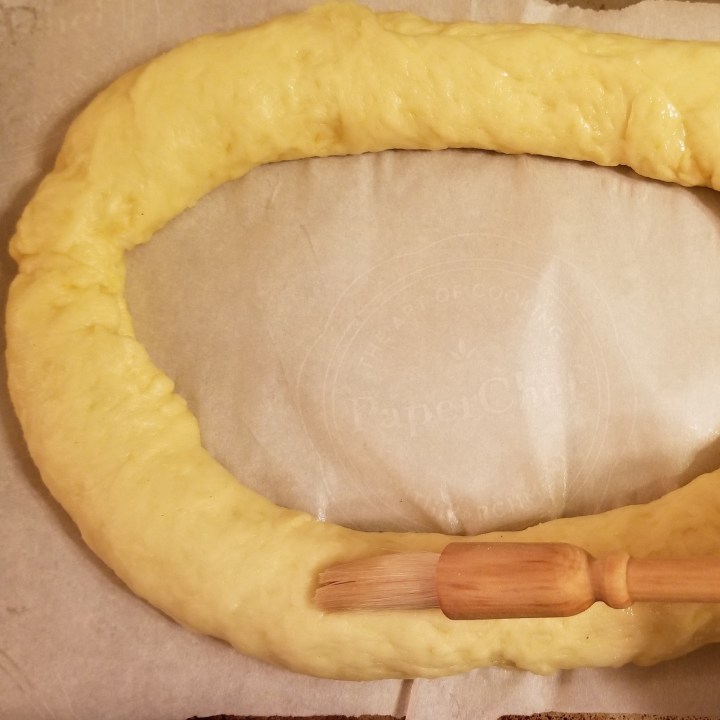
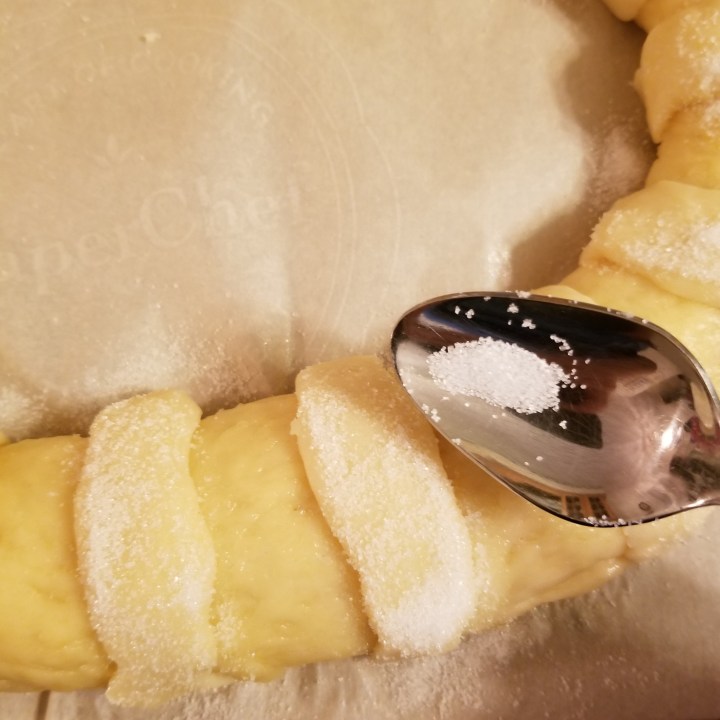
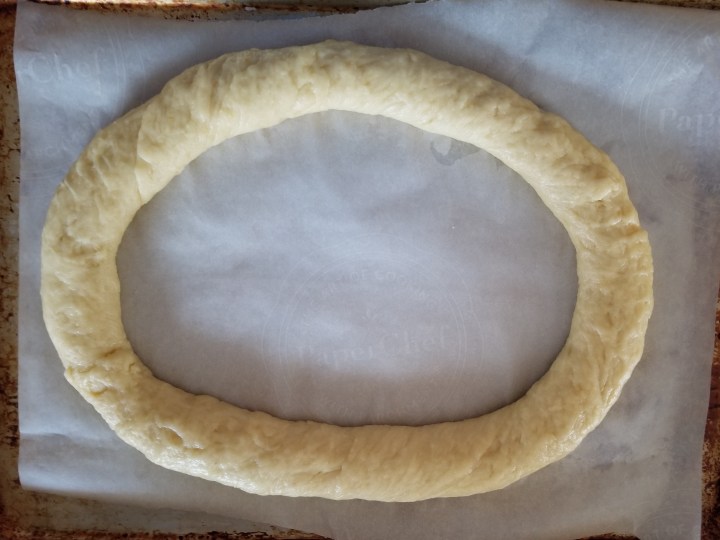
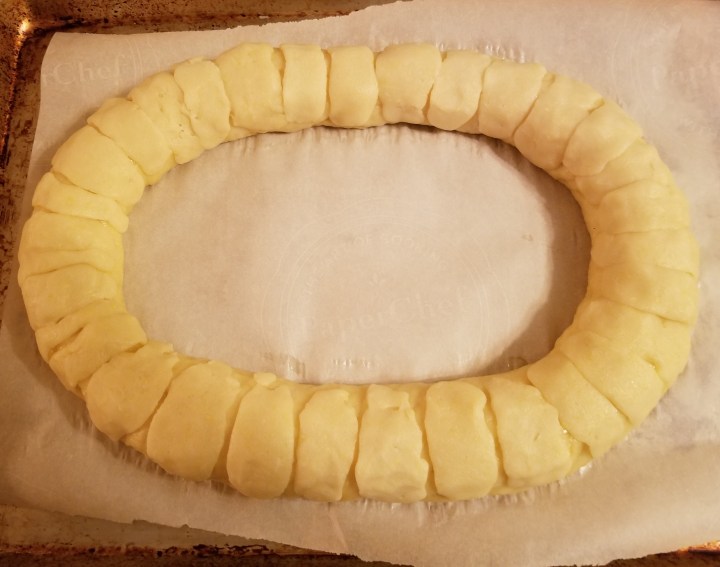
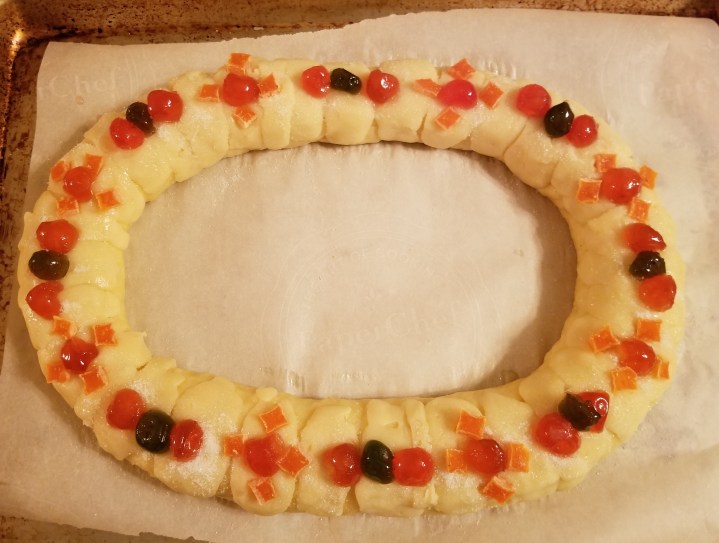
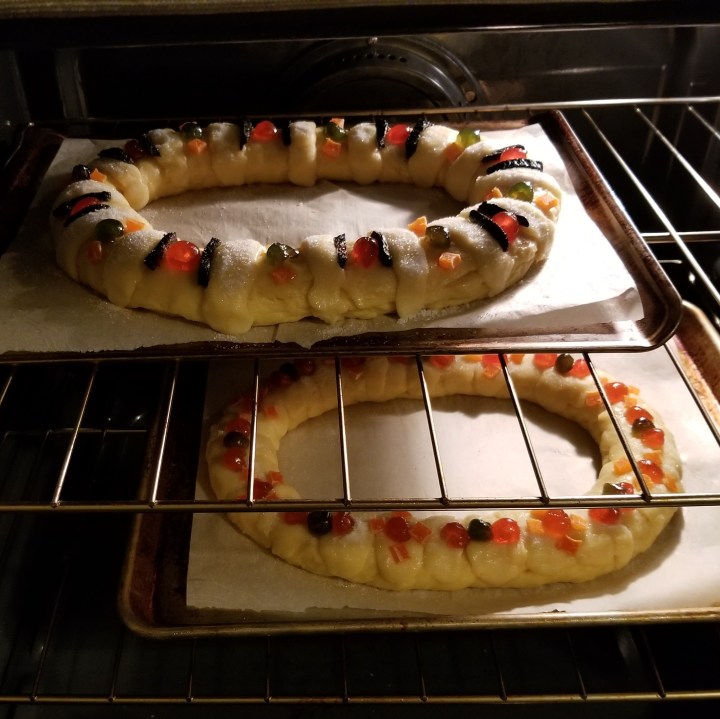

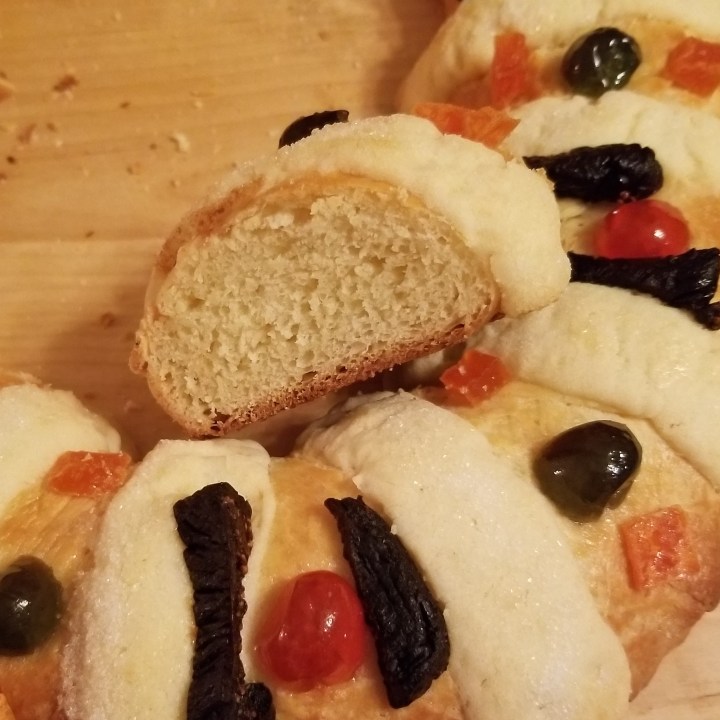
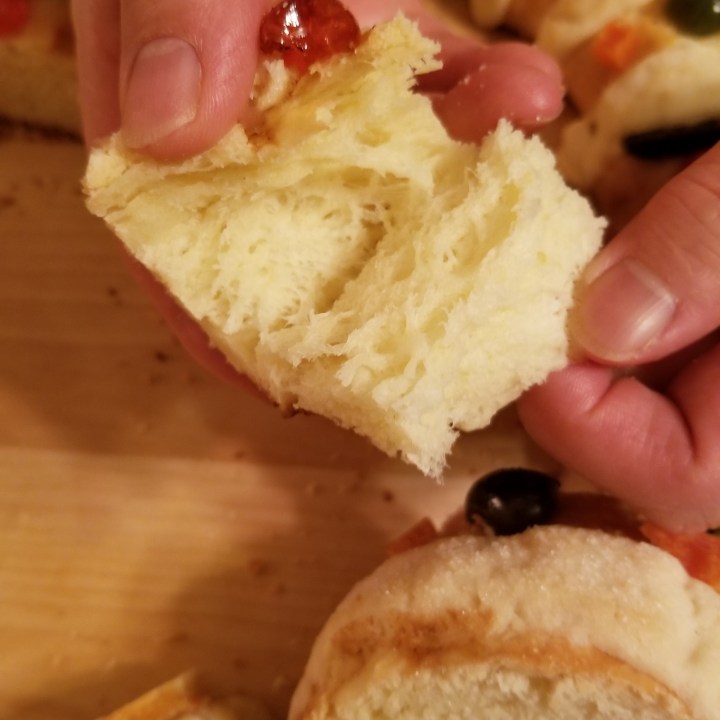
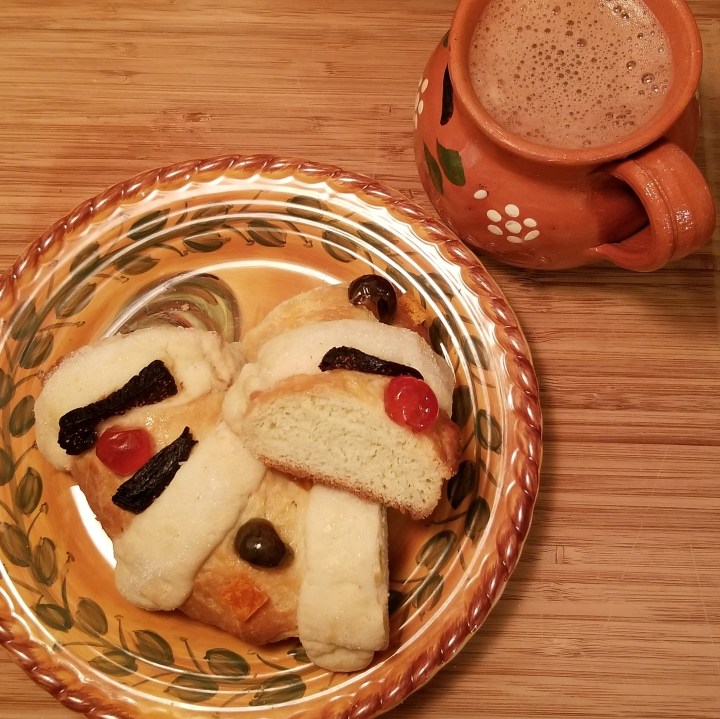
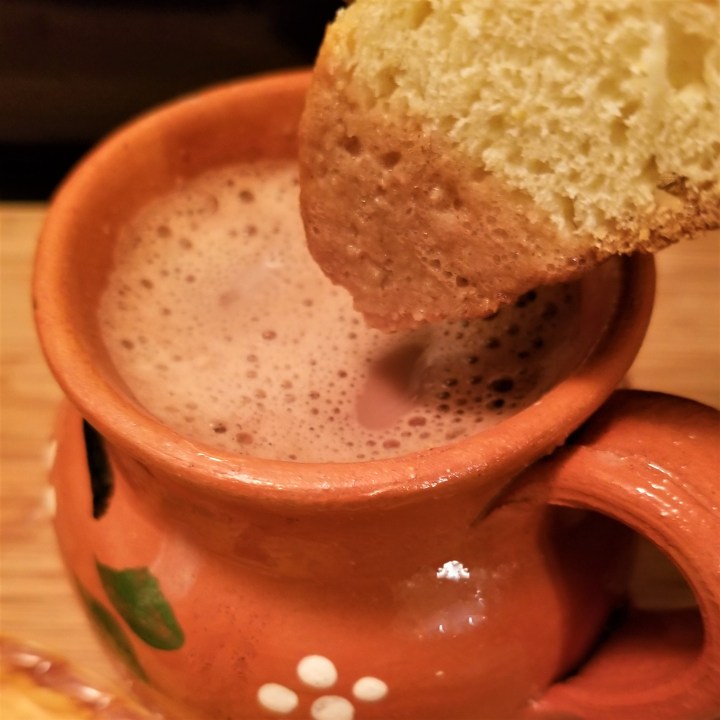







Very enjoyable post. Probably 10 years ago, my brother, daughter in-law, and I decided to have a Mardi Gras party. I made a King Cake and hit a tiny baby in it. Internet research only so only did the mechanics of it without knowing the background.
LikeLiked by 2 people
So you were the queen for the day without knowing!
LikeLiked by 2 people
❤ It was a wonderful party
LikeLiked by 1 person
Not too late to make Epiphany bread, and maybe someone else will get the baby and make the tamales, heehee
LikeLiked by 1 person
🙂
LikeLike
As always, your posts are informative and tempting 🙂
LikeLiked by 1 person
Thank you Linda!
LikeLike
We just celebrated Fete des Rois today here in NZ as a remembrance of the French tradition. The kids love it.
LikeLiked by 1 person
Did you have a special bread, as well?
LikeLiked by 1 person
We had a round cake, but that bread looks amazing 😍😍
LikeLiked by 1 person
The bread looks amazing Irene – and I really enjoyed the history! Great post!! Thanks for sharing at the What’s for Dinner party! Have a fantastic week.
LikeLiked by 1 person
Thank you, Helen, have a great week, too!
LikeLike
Happy New Year Irene !!! I enjoyed reading and watching your post, its very interesting. Thank you for sharing..I wish I could taste this bread..looks so good!
LikeLiked by 1 person
Thank you MarEliz, Happy New Year!
LikeLike
I saw this epiphany bread in our store! Looks so delicious, but I’m afraid I can’t eat all of it by myself. The history behind it is so fascinating!
LikeLiked by 1 person
Yes, this bread is meant to be shared, so it is more exciting to see who gets the figurine inside. Thank you for your kind comment, Theresa!
LikeLiked by 1 person
You had me at bread!!!! This is not something I’ve had anything like before and looks absolutely yummy.
Congratulations , someone loved this post so much they added it to our #blogcrush linky
LikeLiked by 1 person
Thank you for visiting my blog and for letting me know about #BC; what a great idea, I will try to join next week!
LikeLike
Would be fab to have you !
LikeLiked by 2 people